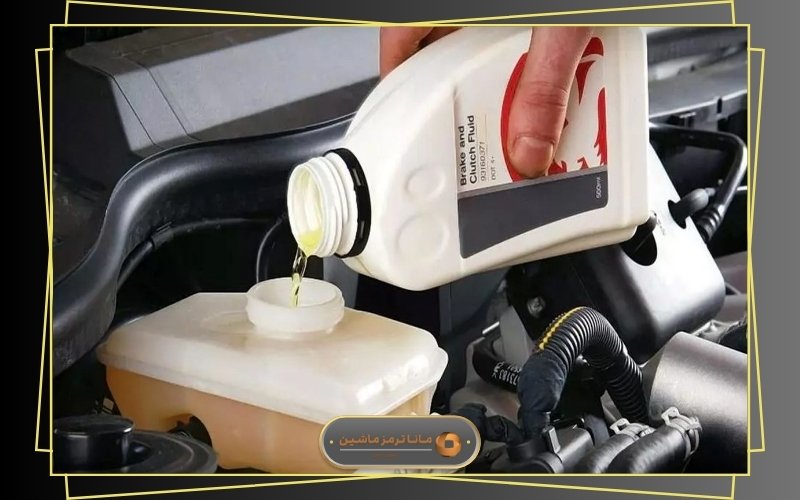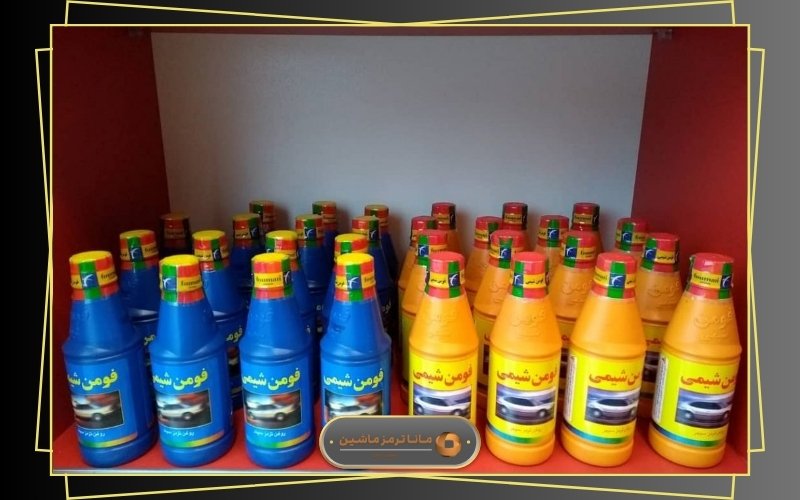Brake Fluid 101: Function, Types, and Essential Facts
In this article we read
ToggleWhen people think of automotive lubricants, engine oil is often the first thing that comes to mind. However, modern vehicles rely on a variety of essential fluids, and engine oil is just one of them. Other critical lubricants include gear oil (transmission fluid), brake fluid, and power steering fluid, all of which play vital roles in ensuring the smooth and safe operation of a vehicle. In this article, we’ll focus specifically on brake fluid and its various types.
Like other automotive fluids, brake fluid requires periodic inspection and replacement. It is classified under specific international standards, just like engine oil, and each type of brake fluid is formulated for a specific kind of braking system. Therefore, it’s important to know which type of brake fluid your car uses and when it should be replaced.
In the following sections, we’ll answer these key questions and provide all the information you need to properly maintain your braking system.
Stay with Mana Tormoz…
What Is Brake Fluid and What Does It Do?
In light vehicles, the braking system is typically hydraulic, meaning it operates based on fluid pressure. When the driver presses the brake pedal, brake fluid flows toward the brake pads, pressing them against the brake disc to initiate the stopping process.
In this system, brake fluid plays a central role—not only by transferring force but also by helping to absorb heat and moisture, which contributes to the longevity of the braking components. For this reason, regularly checking the condition and level of brake fluid is a key part of vehicle maintenance.
A low brake fluid level may indicate worn-out brake pads or a leak in the brake system. If the brake fluid pressure drops below the safe limit, it’s essential to have the vehicle inspected immediately by a professional mechanic to prevent further issues or brake failure.
Brake Fluid Standards and Naming System
The classification system for brake fluid in light vehicles is known as DOT, short for the U.S. Department of Transportation. This standard categorizes brake fluids from DOT 1 to DOT 5. DOT 1 and DOT 2 were mostly used in older vehicles, while DOT 3, DOT 4, and DOT 5 are designed for modern cars. Most vehicles today use either DOT 3 or DOT 4 brake fluid.
Brake fluid types can often be identified by their color, but it’s also important to note that brake fluid absorbs moisture from the environment over time, which alters its chemical properties and can pose risks—especially for ABS systems. For this reason, it’s recommended to replace brake fluid at least once a year.
DOT 1 and DOT 2 Brake Fluid
DOT 1 and DOT 2 brake fluids are no longer in use and have been discontinued for many years. These were mineral-based and had lower boiling points than newer types. Today, they are hard to find on the market and are considered unsafe due to their limited heat resistance.
DOT 3 Brake Fluid
DOT 3 is one of the most commonly used brake fluids in both older and many newer vehicles. It is glycol-based and significantly different from earlier mineral-based fluids.
- Dry boiling point: ~205°C
- Wet boiling point: ~140°C
Because DOT 3 can heat up quickly during frequent or aggressive braking, it may degrade faster, affecting brake performance. It also tends to be corrosive, so if it comes into contact with the car’s paint, it can cause damage. In case of skin contact, wash the area immediately with soap and water.
DOT 4 Brake Fluid
DOT 4 is commonly used in vehicles manufactured by European brands. It has a higher boiling point than DOT 3 and contains additives that help reduce corrosion and wear.
- Dry boiling point: ~230°C
- Wet boiling point: ~155°C
DOT 4 comes in various subtypes, so it’s important to use the exact type specified by your vehicle’s manufacturer. While mixing DOT 4 with DOT 3 is possible, it’s not recommended, as it won’t improve brake system performance.
The typical color of DOT 4 fluid is amber, though some special variants differ. For example:
- DOT 4 Plus (used by Mercedes-Benz, Volvo) may appear slightly different
- Low-viscosity DOT 4 (used in BMWs) is often blue
Knowing which fluid is correct for your vehicle is essential for maintaining safe and reliable braking performance.
DOT 5 Brake Fluid
DOT 5 brake fluid is considered a more advanced version of DOT 3. It has a dry boiling point of around 260°C and a wet boiling point of approximately 180°C. What makes DOT 5 unique is that it does not absorb moisture. Instead, if it comes into contact with water, it forms a foam-like mixture, which can cause serious issues—especially in ABS-equipped systems.
Due to these characteristics, DOT 5 is only used in specialized vehicles and is not recommended for standard consumer cars. In addition to structural limitations, DOT 5 is more expensive and cannot be mixed with any other type of brake fluid.
DOT 5.1 Brake Fluid
DOT 5.1 is a more advanced version of DOT 4, specifically developed for high-performance and racing vehicles. It is glycol-based and has a light amber color. Its dry boiling point is around 270°C, while the wet boiling point reaches 190°C.
Although DOT 5.1 can technically be mixed with DOT 3 and DOT 4, it is not recommended due to structural differences. DOT 5.1 is also significantly more expensive—up to 14 times the price of DOT 3.
Conclusion
After reading about the various types of brake fluids, you might feel overwhelmed—but don’t worry. Brake system maintenance isn’t complicated and only requires attention to a few simple details.
First, just like with engine oil, your car’s owner’s manual specifies the correct type of brake fluid. Some vehicles also have labels under the hood or near the grille indicating the proper fluid type. If you don’t have access to the manual, simply consult a qualified mechanic to determine the right brake fluid for your vehicle.
Second, consider how often you use your car. If you drive occasionally, checking or replacing the brake fluid every three years may be sufficient. However, if you’re a frequent or daily driver, it’s safer to replace the fluid annually or even sooner. Ultimately, fluid replacement intervals depend on your driving style and usage.
Lastly, always choose high-quality, certified brake fluid to ensure the safety and reliability of your braking system—especially if your car is equipped with advanced systems like ABS or brake force distribution. For more tips on car care and maintenance, explore additional articles and guides at Mana Tormoz.



